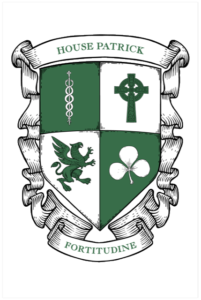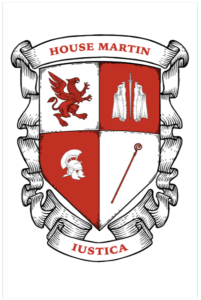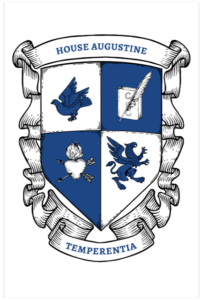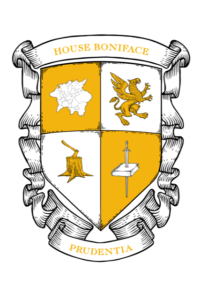The House System at Oak Hill Classical School
Introduction
The mission of Oak Hill Classical School is to provide an education that cultivates wisdom, joyful learning, and love for God. One of our key commitments is to seeing education holistically — as something that involves the whole person. In addition, we strive to build a Christian learning community, characterized by the pursuit of wisdom, joyful learning, and love for God and our fellow man.
In an effort to promote the Christian community and provide unique elements in an Oak Hill education that foster tradition and a healthy pride in the school, we introduced a house system, which borrows heavily from other classical schools and the English boarding school system.
About the House System
Though the best-known school houses today are the fictional houses of Harry Potter’s Hogwarts School — Gryffindor, Slytherin, Hufflepuff, and Ravenclaw — the house system has historical roots in medieval academic institutions. In the early Middle Ages, students who desired an education would gather in a city where a Master Teacher was living. With this Master, they would share a house and devote themselves to study. The Master not only taught these students their academics, but also discipled them in their Christian walk. These gatherings of students were the foundations of the great universities of Europe.
Today, the term ‘house’ refers simply to groupings of pupils, with no buildings involved. Houses were originally named after the Master Teacher around whom the house was centered. Later, the houses were named after Christian saints, or famous persons connected with the particular academic institution. In Asia, houses were named after animals or after nationalities. In England, houses were named after geographical places or peculiar historical people or events. Elmfield, The Grove, The Headmasters, The Park, and West Acre are some examples of this practice.
The Oak Hill Classical School Houses
Reminiscent of traditional British schools, all Oak Hill students are divided into Houses. In the traditional boarding schools, the students actually lived in and with these houses, but our system is a bit less ambitious. Besides the natural fun that comes along with such a system, the house system affords additional opportunities for:
- Nurturing relationships across grade levels
- Leadership, friendly competition, and service
- Faculty involvement with students on a different relational level
- Positive peer pressure and mentorship
As a classical school, Oak Hill delves into the works of antiquity, learning that all truth is God’s truth. In developing the houses, we have sought to emphasize the four classic virtues, which reflect God’s truth — prudence or wisdom, temperance or moderation, fortitude or courage, and justice. We have selected a Christian saint to exemplify these virtues and inspire our students to model them in their own lives.
While each house has a “key virtue,” we expect that students will pursue all the virtues. As Thomas Aquinas, a key writer on the virtues, noted, the virtues are interdependent: “There is no true prudence, unless it be just, temperate and brave; no perfect temperance, that is not brave, just and prudent; no sound fortitude, that is not prudent, temperate and just; no real justice, without prudence, fortitude and temperance.” that were, and are, important character traits for all people to demonstrate in their lives.
Oak Hill’s houses, with their colors, patrons, and key virtues are as follows:
 Patrick of Ireland, Bishop of Armagh and Enlightener of Ireland, was born a Briton. Captured and brought to Ireland as a slave, he escaped and returned home. Later, he returned to Ireland, bringing Christianity to its people.
Patrick of Ireland, Bishop of Armagh and Enlightener of Ireland, was born a Briton. Captured and brought to Ireland as a slave, he escaped and returned home. Later, he returned to Ireland, bringing Christianity to its people.
Virtue: Courage (fortitudo)
Color: Green

Martin of Tours (Latin: Martinus), was a bishop of Tours in the fourth century. He showed interest in Christianity at an early age. After service in the Roman army, he was baptized and became a disciple of St. Hilary of Poitiers, who was prominent in the trinitarian disputes with the Arians.
Virtue: Justice (iustitia)
Color: Red

Augustine was born in 354 in Tagaste (modern-day Algeria) to a Christian mother and a pagan father. Raised in Roman North Africa, educated in Carthage, and employed as a rhetoric professor in Milan, he became a Christian through the influence of Ambrose, the bishop of Milan. He made important contributions to theology and philosophy, including developing the Christian understanding of the cardinal virtues.
Virtue: Temperance (temperantio)
Color: Blue

Boniface (Latin: Bonifacius), (c. 672 – June 5, 754 or 755), the Apostle of the Germans, was born Winfrid or Wynfrith at Crediton in Devonshire. He later became a missionary who propagated Christianity in Germany during the 8th century.
Virtue: Prudence (prudentia)
Color: Gold



